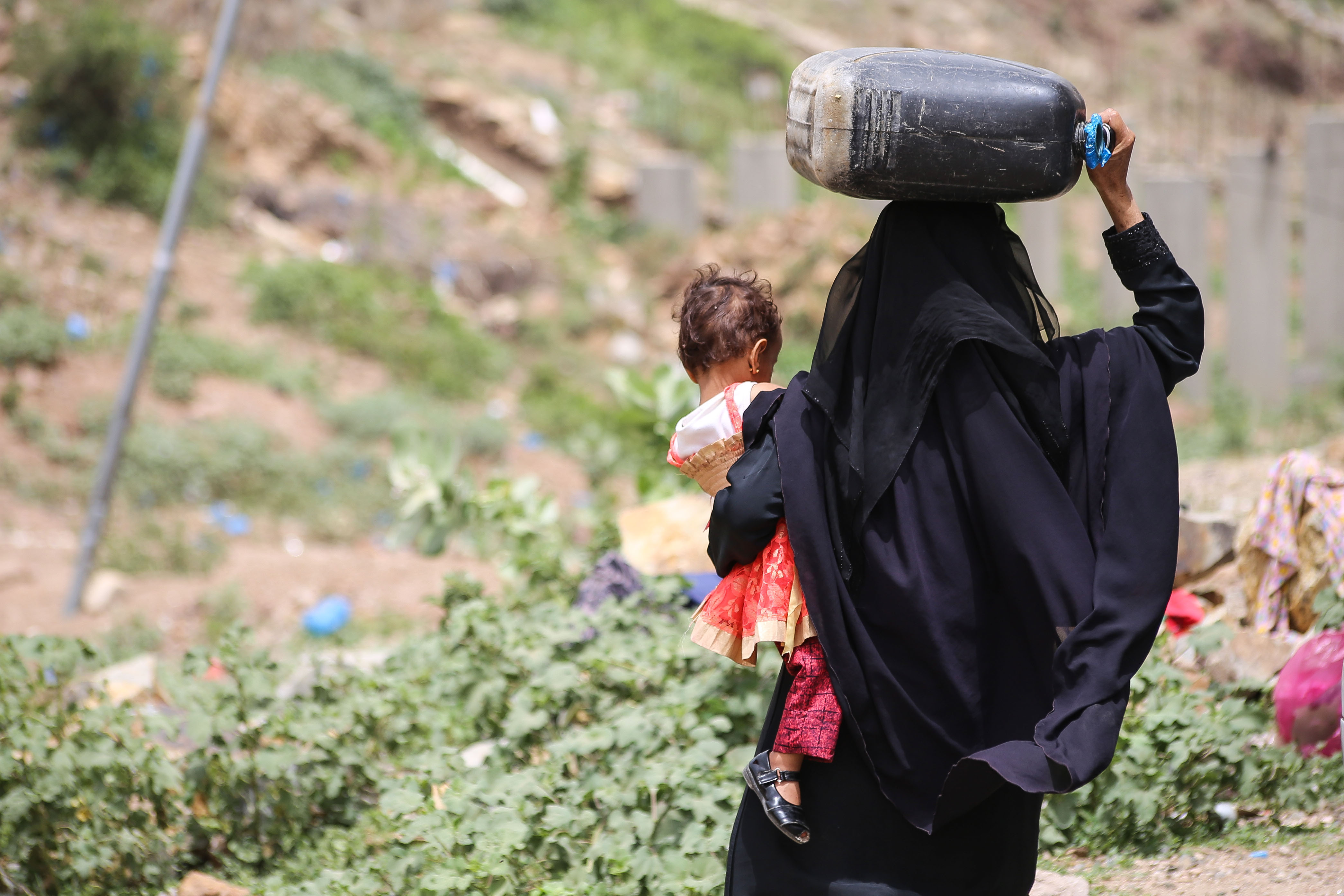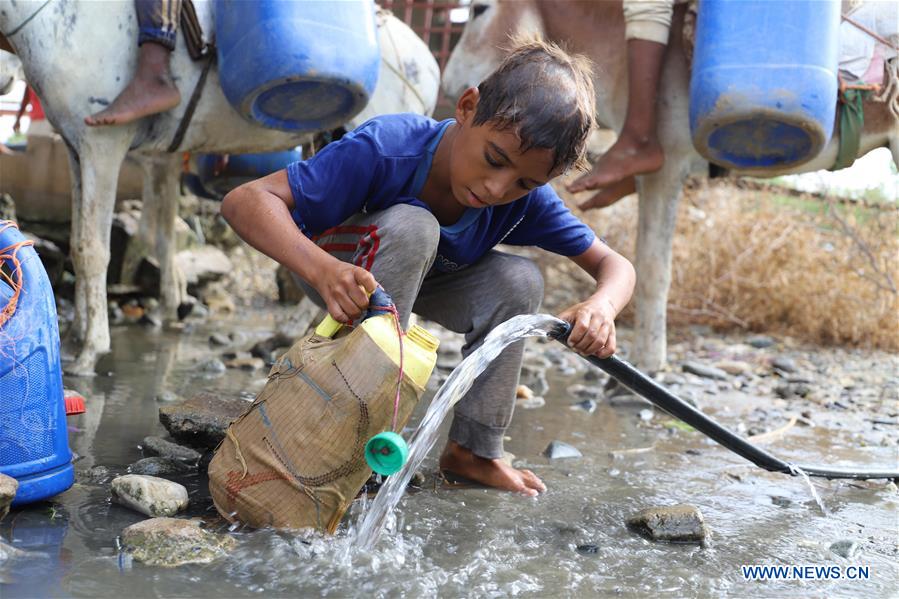
Yemen’s Future Conflicts Will Be Over Water
Ravaged by war, the country is also
running out of water. That is leading to local conflicts that could grow.
Niku Jafarnia / Al Jazeera
(October 14, 2022) — In just two days this August, heavy floods caused extensive devastation across Yemen, killing at least 38 people and destroying the shelters of thousands of internally displaced persons (IDPs) in the city of Marib.
This wasn’t a one-off event. Over the course of a month — from mid-July to mid-August — flooding affected 16 governorates across the country, killing at least 77 peopleF
This atypical degree of flooding represents a compounding catastrophe for a country that experts have predicted could soon run out of usable water and that has been ravaged by war for the last eight years.
Rain is rare, but “when it comes it is very intense for a short period of time, causing floods, which in turn causes significant damage to farmland and buildings, as well as the loss of life,” Dr Walid Saleh, the chief technical adviser at the UN Food and Agricultural Organization (FAO) in Aden, told me.
Indeed, as temperatures have risen, the frequency and severity of extreme weather events have also increased, combining with the destruction of water sources across the country by warring parties to deepen Yemen’s crisis.
And the crisis will only get worse. According to new research conducted by the Center for Civilians in Conflict (CIVIC), local conflicts are breaking out over water and other resources across Yemen. In Hadramout governorate, for instance, we found that two groups of farmers have been fighting over water after flooding destroyed a canal.
Such conflicts have the potential to grow larger and become more intractable if climate change and environmental destruction are not immediately addressed.
The Heat Is On
Over the last half-century, average temperatures in Yemen have increased by 1.8 degrees Celsius, setting off a chain reaction — unpredictable rainfall, extended periods of drought and severe flooding. These climate trends have devastated arable land, destroyed critical infrastructure and displaced tens of thousands of people.
With no infrastructure to properly capture and channel the rainfall towards the country’s water basins, water levels in Yemen’s aquifers are running dangerously low.
As a result, wells connected to the basins have begun to dry up. Indeed, in the capital, Sanaa, water could previously be found at a depth of just 180 metres. Today, some wells drilled to a depth of 1,000 metres don’t yield potable water.
Once a country that largely depended on agriculture, the percentage of the population that lives in rural Yemen has decreased from 91 percent to 61 percent between 1960 and 2020. As farming has become increasingly unviable, agrarian communities have migrated to cities in search of alternative livelihoods. Meanwhile, irrigation remains unregulated for those who remain in agriculture. Qat, Yemen’s primary cash crop, is a major water guzzler.
War Increases Scarcity
Climate change and over-irrigation are not the only major drivers of water scarcity in Yemen. The war between the Saudi-led coalition and Houthi armed group has also left critical water infrastructure damaged and destroyed.
And if climate change and conflict aren’t each bad enough, they have begun partnering in devastation.
One internally displaced woman told CIVIC how the Houthis had placed landmines around al-Juba district of Marib in October 2021. Then, floods washed those landmines onto peoples’ land. “All of the farmers had to abandon their land … even their sheep couldn’t graze there,” she said.

The Future of Conflict in Yemen
Of course, community conflicts over water in Yemen are not new. Ishraq al-Maqtari, a member of the National Commission for the Investigation into Alleged Human Rights Violations in Yemen, described to me an ongoing, two-decades-long conflict between two tribes living in the Muwadim district of Taiz governorate over fresh water.
People from both tribes have been killed and wounded over the years, and the conflict has been exacerbated by the broader war in the country and the Houthi siege on the city, she said.
Yet our research suggests that many more fresh conflicts will emerge as water sources are depleted in the future.
Displacement adds to the resource strain on communities hosting those fleeing war. Marib, a governorate that had a population of just 500,000 prior to the war, now has a population of more than three million people due to the influx of IDPs. Fights have broken out there between IDPs and the host community over land, sewage and waste management.
Canary in the Coal Mine
There are few places in the world where the threats posed by climate change are so evident.
With no sustainable, long-term solutions in place to mitigate the effects of climate change and human-made environmental destruction, the people of Yemen face grave risks.
Yet Yemen should serve as a clear warning to the rest of the world, too. Climate change acts as a conflict multiplier. Left unaddressed, it threatens to exacerbate existing wars and create new ones, both in Yemen and in every other part of the planet.
The views expressed in this article are the author’s own and do not necessarily reflect Al Jazeera’s editorial stance.
Posted in accordance with Title 17, Section 107, US Code, for noncommercial, educational purposes.


.jpg?itok=UE7eOZUL)